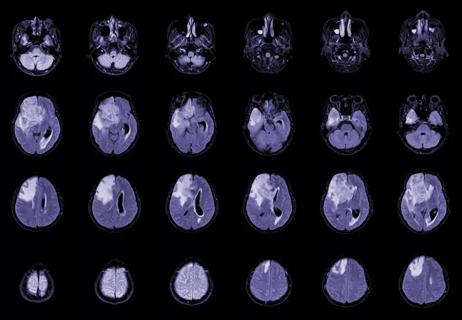Identification of prognostic clinical factors should aid treatment decisions

The safety of modern intensity-modulated radiotherapy (IMRT)-based re-irradiation for recurrent or second primary squamous cell carcinomas of the head and neck appears significantly improved compared with previous re-irradiation results, according to the largest study to date.
Cleveland Clinic is a non-profit academic medical center. Advertising on our site helps support our mission. We do not endorse non-Cleveland Clinic products or services. Policy
This multi-institution cohort study led by Cleveland Clinic also identified several clinical factors strongly predictive of improved overall survival (OS) after re-irradiation using IMRT, with important implications for patient selection.
Taken together, the results may alter the common clinical perception that the risks of re-irradiation outweigh its value, and should help guide therapeutic decision-making.
Findings were presented at the 2016 annual meeting of the American Society for Radiation Oncology (ASTRO) in Boston.
“We knew there would be differences among the patients in the study in terms of overall survival, but we were surprised at how simple and distinct the prognostic subgroups were,” says Matthew Ward, MD, a resident physician collaborating on the study with Shlomo Koyfman, MD. Drs. Ward and Koyfman are radiation oncologists at Cleveland Clinic Cancer Center.
In particular, the time elapsed between initial radiation therapy and IMRT re-irradiation was an especially strong prognostic factor for survival, with shorter intervals (and reduced survival) perhaps reflecting the biology and aggressiveness of the disease, Dr. Ward says.
Analyses revealed three distinct subgroups or prognostic classes. The most favorable prognostic class consisted of patients who received IMRT re-irradiation more than two years after the initial radiation therapy (RT) course. Tumor resection, regardless of margin status, was also a feature of the most favorable class. The two-year OS in this class was 61.9 percent, compared to 16.8 percent in the class with least favorable pre-treatment prognostic factors.
A total of 412 patients from eight institutions were included in the study, each patient having recurrent or second primary squamous cell carcinoma originating in a field previously irradiated to at least 40 Gy and treated with IMRT re-irradiation to at least 40 Gy. The median time between treatment courses was 2.4 years (range 0.2-34 years).
Tumor resection surgery preceded re-irradiation in 195 patients (47 percent). The median dose of re-irradiation completed for all patients was 60 Gy (range 1.8-79.2 Gy), and for the 95 percent who completed the prescribed course, the median dose was also 60 Gy (range 39.6-79.2 Gy) delivered over a median of 33 fractions (range 12-66). Chemotherapy was administered to 315 patients (77 percent), with 309 (98 percent) receiving it concurrent with re-irradiation.
The safety of IMRT re-irradiation documented in the study appears significantly better than in earlier trials involving conventional RT or IMRT combined with chemotherapy for recurrent head and neck squamous cell carcinoma.
Rates of life-threatening (grade 4 and higher) and fatal acute toxicity in the present study were 4.4 percent and 1.2 percent, respectively, compared with life-threatening toxicity rates of 18 to 28 percent and fatal acute toxicity rates of 5 to 7.6 percent documented in phase 2 studies by the RTOG published in 2007 and 2008.
The improved safety of IMRT re-irradiation is likely multifactorial, the researchers say, and may result from conformal radiotherapy techniques, improved supportive care, systemic therapy and patient selection.
Factors independently associated with improved OS on multivariable analysis were then used to identify distinct and homogeneous prognostic classes. Longer time between initial RT and re-irradiation was a key prognostic factor in improved survival. Among patients more than two years from their original RT course, surgery was also an important factor. For patients two years or less from their original RT course, organ dysfunction (defined as pre-treatment feeding tube or tracheostomy dependence) was significantly associated with reduced overall survival. The three classes and survival statistics are:
| Patients | 2-Year OS | |
|---|---|---|
| Class I | > 2 years from prior RT + resected | 61.9% |
| Class II | > 2 years from prior RT + unresected – or – ≤ 2 years from prior RT without organ dysfunction | 40.0% |
| Class III | ≤ 2 years from prior RT with organ dysfunction | 16.8% |
| Class I | ||
| Patients | ||
| > 2 years from prior RT + resected | ||
| 2-Year OS | ||
| 61.9% | ||
| Class II | ||
| Patients | ||
| > 2 years from prior RT + unresected – or – ≤ 2 years from prior RT without organ dysfunction | ||
| 2-Year OS | ||
| 40.0% | ||
| Class III | ||
| Patients | ||
| ≤ 2 years from prior RT with organ dysfunction | ||
| 2-Year OS | ||
| 16.8% |
The two-year OS for the entire cohort was 40 percent. On multivariate analysis, the use of chemotherapy did not make a significant difference in OS, nor did age or comorbidities.
Despite therapeutic improvements in the IMRT era, patient selection for re-irradiation remains challenging. “Patients with recurrent head and neck cancers are subject to significant morbidity from their disease, and the recurrences can be difficult to cure,” Dr. Ward says. “For years, we’ve given many patients second courses of radiation for seven to eight weeks, but for some, the treatment does not control the tumor, and the patient may succumb to their disease within a few months. We need a way to select out those patients who do well and those who do poorly with a second course of IMRT radiation,” he says.
Although the classes identified in the study can be used to guide therapeutic choices, it’s also important to make patient-specific decisions, in consultation with the patient’s wishes, Dr. Ward says. “It’s not just a matter of using this class system. However, if I saw a Class III patient, I would hesitate to recommend re-irradiation with an intensive, six-to-eight week course of IMRT,” he says.
“We can use these prognostic subgroups to help us decide which patients should undergo the weeks of IMRT and which might be better served by offering less taxing alternatives such as stereotactic body radiation therapy (SBRT) and/or palliation,” Dr. Ward says, noting that SBRT is often markedly easier on patients since it can be administered in only five doses.
In the big picture, these data improve the understanding of which patient subgroups are likely to experience prolonged OS after IMRT re-irradiation. They also suggest the importance of surgery in the general approach to recurrent and second primary disease. Additional data on the comparative effectiveness of modern systemic therapy and modern re-irradiation are needed, the researchers note.

Timing and type of side effects differ greatly from chemotherapy

Dedicated multidisciplinary teams support 84 ultra-rare cancers

Sessions explore treatment advances and multidisciplinary care

New research from Cleveland Clinic helps explain why these tumors are so refractory to treatment, and suggests new therapeutic avenues

Combination of olaparib and carboplatin results in complete durable response for a patient with BRCA2 and “BRCAness” mutations

Early communication between oncologists and ophthalmologist warranted

Case-based course delves into latest treatment approaches

Long-term relationship building and engagement key to gaining community trust